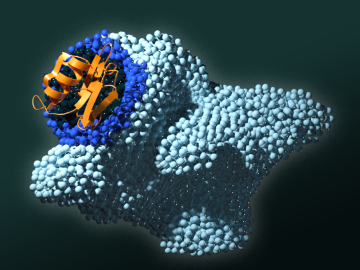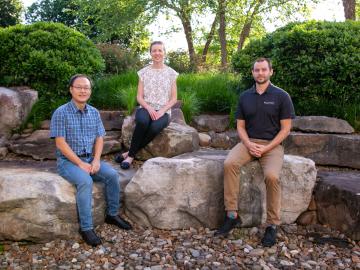
Filter News
Area of Research
- (-) Biology and Environment (52)
- (-) Materials (43)
- Advanced Manufacturing (2)
- Biology and Soft Matter (1)
- Building Technologies (2)
- Clean Energy (49)
- Computational Biology (1)
- Computer Science (1)
- Electricity and Smart Grid (1)
- Functional Materials for Energy (2)
- Fusion and Fission (15)
- Isotopes (3)
- Materials for Computing (6)
- National Security (25)
- Neutron Science (14)
- Renewable Energy (1)
- Supercomputing (39)
News Topics
- 3-D Printing/Advanced Manufacturing (5)
- Advanced Reactors (1)
- Artificial Intelligence (7)
- Big Data (1)
- Bioenergy (15)
- Biology (26)
- Biomedical (3)
- Biotechnology (3)
- Buildings (2)
- Chemical Sciences (13)
- Clean Water (3)
- Climate Change (16)
- Composites (3)
- Computer Science (5)
- Coronavirus (3)
- Critical Materials (3)
- Cybersecurity (2)
- Decarbonization (11)
- Energy Storage (14)
- Environment (26)
- Exascale Computing (2)
- Frontier (3)
- Fusion (1)
- Grid (4)
- High-Performance Computing (8)
- Hydropower (5)
- Isotopes (2)
- Machine Learning (5)
- Materials (26)
- Materials Science (10)
- Mercury (1)
- Microscopy (9)
- Nanotechnology (7)
- National Security (2)
- Net Zero (1)
- Neutron Science (5)
- Nuclear Energy (1)
- Partnerships (4)
- Physics (5)
- Polymers (4)
- Quantum Science (2)
- Security (1)
- Simulation (2)
- Summit (2)
- Sustainable Energy (11)
- Transformational Challenge Reactor (1)
- Transportation (2)
Media Contacts

Science has taken Melanie Mayes from Tennessee to the tropics, studying some of the most important ecosystems in the world.

Researchers at ORNL have definitively linked the function of a specific domain of proteins important in plant-microbe biology to a cancer trigger in humans, knowledge that had eluded scientists for decades.

To solve a long-standing puzzle about how long a neutron can “live” outside an atomic nucleus, physicists entertained a wild but testable theory positing the existence of a right-handed version of our left-handed universe.

ORNL researchers have developed an upcycling approach that adds value to discarded plastics for reuse in additive manufacturing, or 3D printing.

As the United States moves toward more sustainable and renewable sources of energy, hydropower is expected to play a pivotal role in integrating more intermittent renewables like wind and solar to the electricity grid

Microorganisms may provide hope that peatlands can withstand hotter temperatures in a changing climate.

The Department of Energy’s Office of Science has selected three Oak Ridge National Laboratory scientists for Early Career Research Program awards.

The Atmospheric Radiation Measurement Data Center is shepherding changes to its operations to make the treasure trove of data more easily available accessible and useful to scientists studying Earth’s climate.

To optimize biomaterials for reliable, cost-effective paper production, building construction, and biofuel development, researchers often study the structure of plant cells using techniques such as freezing plant samples or placing them in a vacuum.

Jagjit Nanda, a distinguished staff scientist, has been elected a fellow of the Materials Research Society. The lifetime appointment recognizes outstanding members whose sustained and distinguished contributions to the advancement of materials research are internationally recognized.


